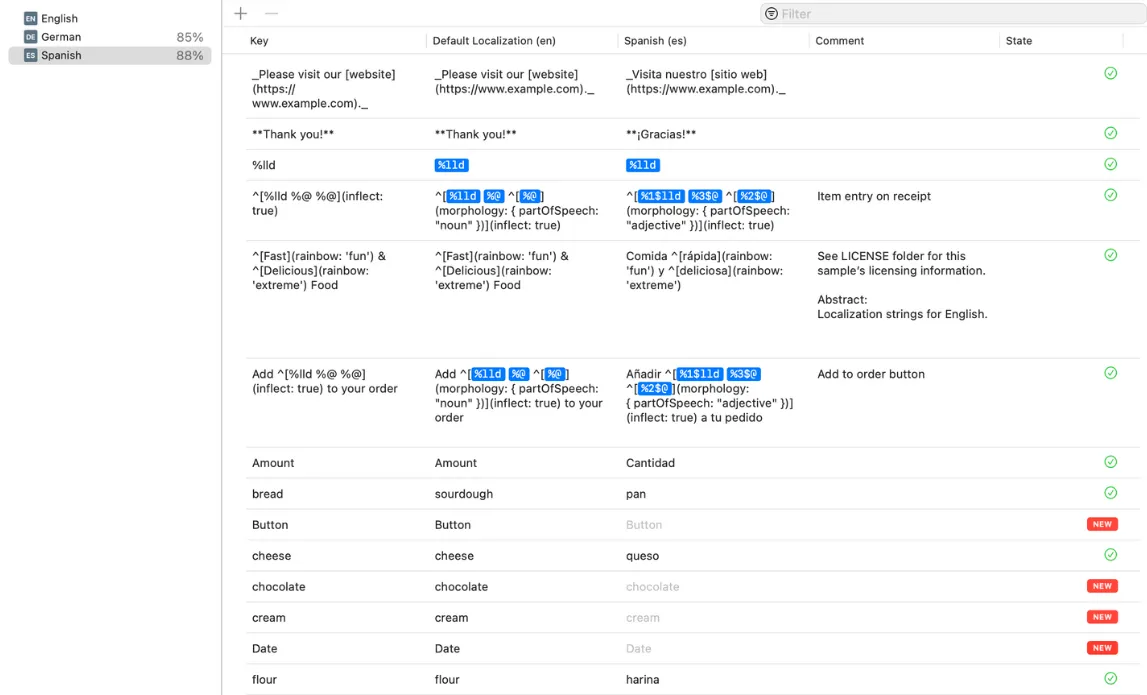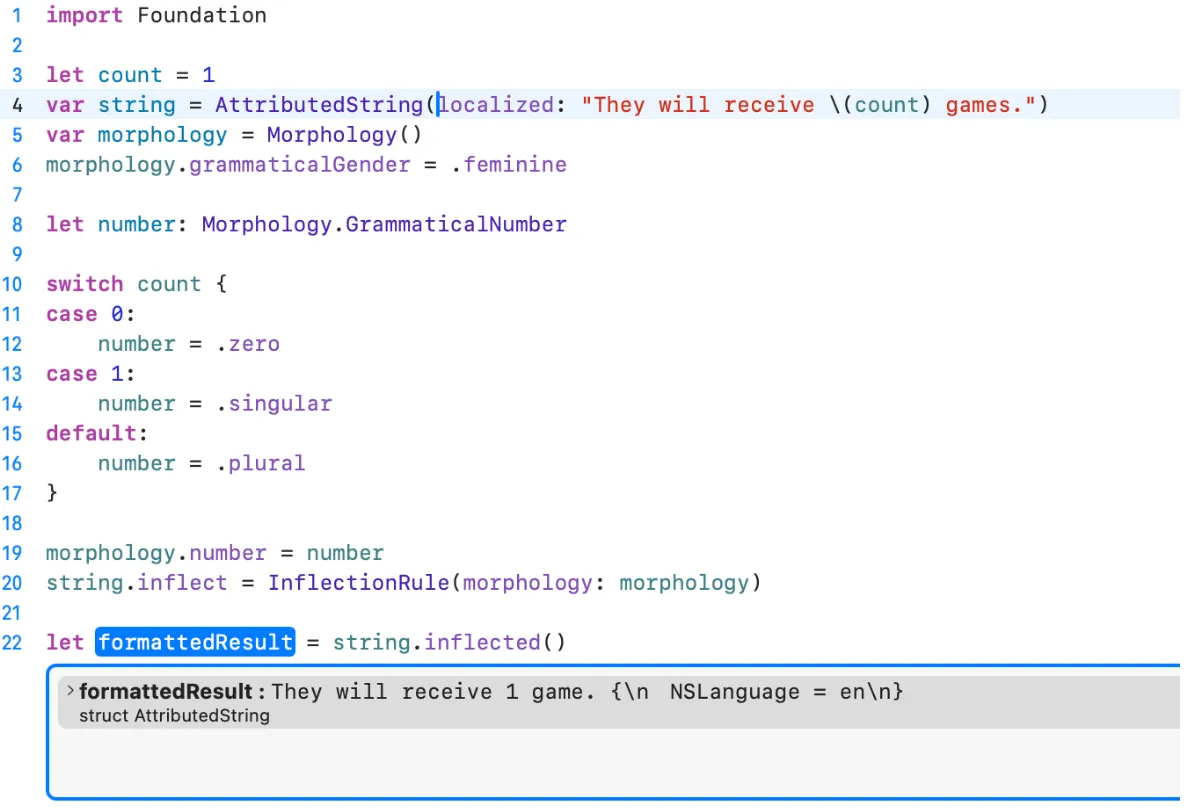· 4 min read
Making Your App Speak Multiple Languages
Localization (L10n) and internationalization (i18n) are crucial for making apps accessible to a global audience. By adapting text, formatting dates, numbers, and assets to different languages and cultural contexts, developers can improve user engagement and expand market reach. This guide explores best practices for iOS localization, including handling pluralization, grammar, and using modern tools like SwiftGen and R.swift for automation.

Introduction
Apps that speak only one language are like tourists who don’t know local customs. Localization bridges communication gaps, transforming user experiences across global markets.
Expanding Your App to New Markets
Localization enables your app to reach a global audience, making it more discoverable and user-friendly for non-English speakers. A well-localized app demonstrates a commitment to serving a diverse audience, which helps establish brand trust and credibility.
Benefits of expanding through localization include:
- Increased user acquisition and retention.
- Ability to tap into new markets without significant re-engineering.
- Improved app store rankings in localized regions.
Improving Developer Experience
Using modern tools and frameworks for localization can streamline the development process, ensuring a smooth and efficient workflow. Many frameworks, including Swift and Flutter, offer robust localization support, making it easier for developers to integrate translations seamlessly.
By investing in a structured approach to localization, developers can:
- Avoid hardcoded strings, making future translations easier.
- Reduce the risk of bugs caused by incorrect formatting in different locales.
- Leverage automated tools to keep translations synchronized across updates.
Understanding i18n vs L10n
Internationalization (i18n)
- The process of designing an application so it can support multiple languages and regions without requiring major code changes.
- Ensures that text elements are externalized, meaning they are stored separately from the code.
- Supports bidirectional text rendering for languages like Arabic and Hebrew.
- Example: Using Unicode for encoding text, enabling support for multiple languages.
Localization (L10n)
- The process of adapting an application for a specific language or region.
- Involves translating text, adjusting date/time formats, and supporting different currencies.
- Ensures that the app maintains cultural relevance.
Localization File Formats:
String Files
Characteristics
- Simple key-value pair format
- Plain text localization
- Limited pluralization support
- Basic translation mechanism
Example
"greeting" = "Hello, %@!";Advantages
- Simple structure
- Wide tool compatibility
- Easy to read and edit
- Lightweight
Disadvantages
- No built-in status tracking
- Manual pluralization management
- Limited device variation support
- No automatic synchronization
Modern: .xcstrings Catalog

Characteristics
- Structured localization management
- Native Xcode support
- Advanced translation features
- Comprehensive localization tracking
Advantages
- Translation status tracking
- Automatic project synchronization
- Robust pluralization support
- Device-specific string variations
- Export/import for professional translation
- Visual editor in Xcode
Disadvantages
- Newer format with limited third-party tool support
- Slightly more complex structure
Formatting in Localization
Foundation framework provides a robust set of formatters that transform raw data into culturally appropriate representations.
Numbers Formatting
Use NumberFormatter to format numbers, currencies, and percentages based on locale.
let formatter = NumberFormatter()
// Currency formatting across locales
formatter.numberStyle = .currency
formatter.locale = Locale(identifier: "en_US")
print(formatter.string(from: 1234.56) ?? "") // $1,234.56
formatter.locale = Locale(identifier: "de_DE")
print(formatter.string(from: 1234.56) ?? "") // 1.234,56 €Date Formatting
Use Foundation to correctly handle date and time formats based on locale. Incorrect date formats can lead to confusion and usability issues, particularly in regions with different calendar systems.
- DateFormatter: Format data using predefined styles (.short, .medium, .long, .full) or custom templates.
let formatter = DateFormatter()
let date = Date()
// Localized date styles
formatter.dateStyle = .long
formatter.locale = Locale(identifier: "en_US")
print(formatter.string(from: date)) // January 25, 2025
formatter.locale = Locale(identifier: "fr_FR")
print(formatter.string(from: date)) // 25 janvier 2025- DateIntervalFormatter: Formats date intervals based on locale.
let formatter = DateIntervalFormatter()
let startDate = Date()
let endDate = Calendar.current.date(byAdding: .day, value: 7, to: startDate)!
formatter.locale = Locale(identifier: "en_US")
formatter.dateStyle = .long
print(formatter.string(from: startDate, to: endDate))
// January 25, 2025 – February 1, 2025- RelativeDateTimeFormatter: Provides user-friendly relative time descriptions (e.g., “2 days ago”).
let formatter = RelativeDateTimeFormatter()
formatter.locale = Locale(identifier: "en_US")
print(formatter.localizedString(from: .now, to: .now.addingTimeInterval(3600)))
// "in 1 hour"- DateComponentsFormatter: Locale based date components manipulation
let formatter = DateComponentsFormatter()
// Flexible time interval formatting
formatter.allowedUnits = [.hour, .minute]
formatter.unitsStyle = .full
print(formatter.string(from: 3665) ?? "") // 1 hour, 1 minuteMeasurements formatting
Use MeasurementFormatter to handle unit conversions and localization without a hassle.
let formatter = MeasurementFormatter()
let celsius = Measurement(value: 25, unit: UnitTemperature.celsius)
formatter.locale = Locale(identifier: "en_US")
formatter.unitOptions = .naturalScale
print(formatter.string(from: celsius)) // 77°FBest Practices for Global App Development
1. Create Flexible Placeholders
Dynamic content placeholders are the secret to adaptable interfaces. They enable seamless text replacement without restructuring your entire app.
// Localization-ready approach
Button(String(localized: "purchase_button.title")) { }2. Cultural Formatting Considerations
Different regions interpret data differently. Time, dates, and number representations vary widely across cultures.
let usLocale = Locale(identifier: "en_US")
let euroLocale = Locale(identifier: "de_DE")
let dateFormatter = DateFormatter()
dateFormatter.dateStyle = .short
dateFormatter.locale = usLocale // Formats for US
dateFormatter.locale = euroLocale // Formats for Europe3. String Management Strategies
Modern localization demands smart string handling. Move beyond static translations to dynamic, context-aware string management.
// Advanced pluralization
Text("^[\(itemCount) item](inflect: true)")4. Advanced Localization Techniques: Morphology
Grammatical complexity varies across languages. Morphology helps automatically adapt text to linguistic nuances.

5. Code generation tools
Choose tools that streamline generating compile time constants for your localized strings:
Implementation Strategies
- Extract all translatable text
- Always use
Localefor context-specific formatting - Test with multiple locale settings
- Prefer system formatters over manual implementations
- Consider cultural nuances in formatting
Conclusion
Localization is more than translation - it’s cultural empathy in code. Transform your app from local to global with intentional, user-centric design.
